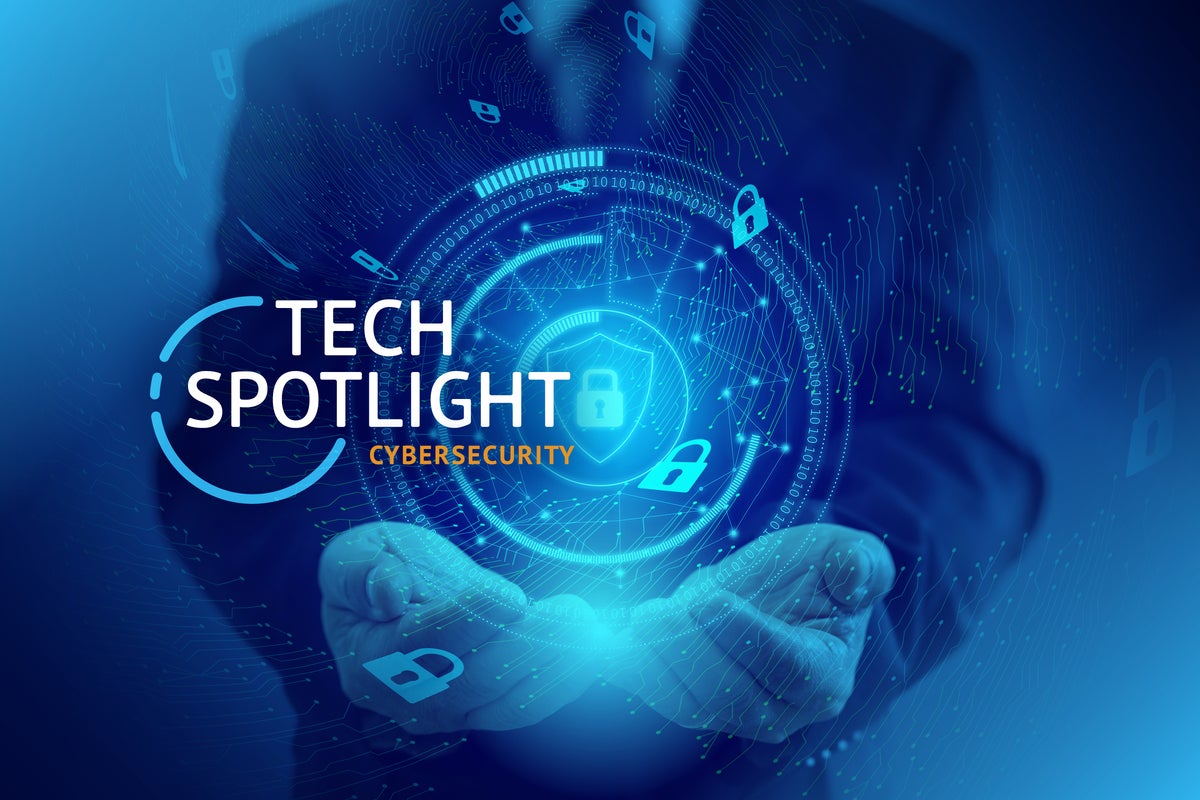Women in tech: What's the landscape look like in the UK?

Computer science-related degrees have seen a relatively low percentage of female
graduates, with the percentage fluctuating between 15% and 16% from 2015 to
2019. Those low participation levels in technical courses are reflected in the
small percentage of women holding tech roles in the UK. Bev White, chief
executive of the Harvey Nash Group, believes that in the wake of the COVID-19
outbreak and Brexit, the UK tech landscape will significantly change. “Digital
will be at the heart of the revolution,” she said. “Tech will be more important
than ever and alongside this, societal appreciation of the importance of
inclusion is growing all the time. I’m confident that we will see real progress
in terms of women’s participation in the tech sector. We are on an irresistible
path to a different kind of society and tech must reflect this.” While the
coronavirus pandemic has put technology and the digital workplace front and
centre in many jobs, a recent whitepaper published by STEM Women found that 60%
of female STEM students have had their future career prospects affected by the
pandemic.
Cybersecurity in 2021: Stopping the madness

Cybersecurity wins the award for Most Dismal Science. But if suffering attacks
now amounts to a cost of doing business, then the time-honored approach of
prioritizing risk and limiting damage when breaches occur still offers reason
for hope. This collection of articles from CSO, Computerworld, CIO, InfoWorld,
and Network World delivers specific guidance on best security practices across
the enterprise, from the C-suite to developer laptops. Writing for CSO,
contributor Stacey Collette addresses the age-old question of how to focus upper
management's attention on security in “4 ways to keep the cybersecurity
conversation going after the crisis has passed.” The thesis is that five-alarm
debacles like the SolarWinds attack can serve as useful wakeup calls. Collette
suggests seizing the moment to convince the board to match the company business
model with an appropriate risk mitigation framework – and to use information
sharing and analysis centers to exchange information on industry-specific
threats and defensive measures. CIO’s contribution, “Mitigating the hidden risks
of digital transformation” by Bob Violino, surfaces a problem hiding in plain
sight: Digital innovation almost always increases risk.
Public Sector Technology And Digital Transformation Predictions 2021

The public sector is a unique arena, worthy of separate consideration. It is, in
fact, several unique arenas, with their own agendas around using technology to
ensure mission success. “Trying to cover the entire public sector perspective is
difficult,” notes Juliana Vida, Splunk’s chief technical advisor for the public
sector and a former deputy CIO for the U.S. Navy. “As across any industry,
there’s such a huge range of maturity levels, of leadership buy-in and
prioritization around technology.” But we do have one blanket prediction for
public agencies: 2021 will be a new era for data in government, says Frank
Dimina, Splunk’s vice president for the public sector. Between the disorder and
rapid transformation of the pandemic and a fractious U.S. election year, Dimina
predicts continued and heightened interest in transformative digital
technologies and the power of data to improve government services and citizen
experience. “Government is moving with an agility we’ve never seen in
peacetime,” Dimina says. “Just one example: The U.S. Department of Defense moved
a million people to remote work in a month.
Get to know 4 microservices versioning techniques

Versioning a microservices-based application is not as straightforward as with a
traditional app. Microservices enable developers to design, build, test, deploy
and update services independent of one another -- or simultaneously, if they
choose to do so. While this is great for architectural flexibility, it also
means that versioning one service can cause it to lose compatibility with
another if updates are not properly planned or synchronized. As such, architects
must implement the right methods and tools to version services consistently and
allow quick rollbacks when needed. ... In contrast to URI versioning, the main
benefit of this technique is that the names and locations of application
resources remain the same across updates. This helps make sure the URI doesn't
become cluttered with versioning information and that API names retain their
semantic meaning to the developers who regularly work with them. One downside of
this approach is that information cannot be readily encoded into the hypermedia
links. ... Semantic versioning is an ideal practice for projects containing
public-facing or communally shared APIs that experience frequent updates. This
technique uses three non-negative integer values to identify version types:
major, minor and patch.
Why data and machine intelligence will become the new normal in insurance

In the next 3-5 years, the digital insurance consumer will likely remain the
millennials, with higher levels of income and education. It is important though
to not assume homogeneity and develop solutions based on lazily assessed group
characteristics. Personalisation is more important now than it ever has been.
Beyond functionality and ease of access, emotions and personal growth are key
drivers in consumption behaviour and like in any other group, there are a
diverse set of expectations and desires amongst this group. Tailoring services
and online buying journeys to the individual rather than the group is paramount;
in the same way that offering life insurance immediately following a bereavement
could be viewed as inappropriate, so too an offer of a social insurance be
offensive to a staunch individualist. Certain benefits, although appealing on
the surface to members of 'the group' may not work at a more nuanced level – a
donation with every policy bought to an environmental charity will not appeal to
every millennial. Hopefully, in this personalised version of the future, the
benefits will be sufficiently tailored that people will see what is most
relevant to them, not to whichever 'group' they may belong to.
Why adding neurodiversity to the cybersecurity world is a win-win for companies and employees

"Often when management and executives hear 'disability accommodations,' they're
thinking of physical or medical things to do," she said "They're not thinking
about the fact that autistic people just think differently, and most of us
neurodivergent professionals function fine." Roddie founded the Actually
Austistic Task Force when she joined IBM. This group provides a closed
communication channel for anyone who identifies as autistic and meets weekly
through WebEx. She said companies should use these employee resource groups to
guide initiatives and collect feedback, as the Neurodiversity at IBM team does.
"A lot of organizations mess up where they create a neurodiversity program in
the workplace, and they don't actually talk to any neurodiverse people and
mostly go based on stereotypes or assumptions," she said. "Having conversations
with and including neurodivergent people in the development phase of social
initiatives is important." Roddie said companies should set more intentional
outreach goals to bring more neurodiverse individuals into the workforce.
India's Bitcoin Exchanges Breathe Sigh of Relief As Gov Reconsiders Crypto Ban

Sidharth Sogani, CEO of the Indian crypto intelligence firm CREBACO, told
Decrypt that it’s the industry’s persistent dialogue with the government that
has prevented a blanket ban. Sogani, who also heads the industry pressure group,
the Association for Blockchain, Crypto, and Digital Asset Entrepreneurs (ABCE),
knew there wasn’t going to be an all-out restriction as the government asked
“very inquisitive questions”, signaling that careful consideration is being paid
with a regulatory framework in mind. As mainstream institutions flock to the
crypto space, the Indian government has seen crypto as an unmissable global
trend, according to Sohail Merchant, CEO of the Indian crypto exchange
PocketBits. PocketBits is one of the members of the Blockchain and
Cryptocurrency Committee (BACC), part of the wider tech industry association
Internet and Mobile Association of India (IAMAI). BACC has been campaigning for
a regulatory framework instead of an outright ban. “The Indian government
realizes that crypto is being adopted globally by corporations like PayPal,
Tesla and top-tier banks,” Merchant told Decrypt.
Developers vs. Security: Who is Responsible for Application Security?
Kunchala says secure code is more critical today than ever before due to remote
working. Kunchala, who formerly led Deloitte’s application security practice,
explained that knowing the risks of a pure remote workforce is critical for a
good cyber hygiene interface. “Your attack surface is much larger now. It’s not
within the four walls of your enterprise,” he says. “Application security should
be a top priority. The biggest attack vector is the application layer.” This
focus on application security is nothing new, however. Because most attacks
occur at the application layer, Kunchala says, the focus on building secure code
has been happening for the last decade. And with that focus, of course, the push
and pull between developers and security experts has increased. In dealing with
multiple clients across a diverse set of industries, Kunchala suggested that
those groups in which defense is built into the culture have less friction for
application security. Of course, it’s highly dependent on the industry. For
some, like health care and finance, security may be more at the forefront. For
others, it may not be as critical. “It’s a mixed bag, and a lot of that is
defined by how the company perceives security, and how important security is for
their products and solutions,” he says.
'The future is coming': At Dubai airport, travellers' eyes become their passports

Dubai’s airport, the world’s busiest for international travel, can already
feel surreal, with its cavernous duty-free stores, artificial palm trees,
gleaming terminals, water cascades and near-Arctic levels of air conditioning.
Now, the key east-west transit hub is rolling out another addition from the
realm of science fiction – an iris-scanner that verifies one’s identity and
eliminates the need for any human interaction when entering or leaving the
country. It’s the latest artificial intelligence programme the United Arab
Emirates has launched amid the surging coronavirus pandemic, contact-less
technology the government promotes as helping to stem the spread of the virus.
But the efforts also have renewed questions about mass surveillance in the
federation of seven sheikdoms, which experts believe has among the highest
per-capita concentrations of surveillance cameras in the world. Dubai's
airport started offering the program to all passengers last month. On Sunday,
travellers stepped up to an iris scanner after checking in, gave it a good
look and breezed through passport control within seconds. Gone were the days
of paper tickets or unwieldy phone apps.
Regtech disruption trends: how digitisation is enhancing regulatory processes

One area of digital innovation that’s been prominent in anti-money laundering
(AML) and Know Your Customer (KYC) is biometric security. Eradicating the need
to remember log-in credentials, this allows users to verify their identity
using fingerprints, selfies or other biological characteristics. Biometric
security also includes detection of suspicious behaviour that deviates from
how a user normally uses a platform, such as a different IP address. Banks,
for example, have been starting to provide the option of fingerprint or facial
recognition-powered access to accounts. But today’s solutions should look out
for false face IDs, which have also risen and aim to fool the system. “Our
research indicates that fake face IDs are available on the dark web for as
little as €50 and some of them are so realistic, they can often fool human
passport agents,” said Roger Tyrzyk, director, global gaming and sales for
UK&I at IDnow. “The most commonly faked documents are national ID cards
followed by passports. Other documents include residence permits and driving
licences. The quality of these fake IDs is increasing too.
Quote for the day:
"People seldom improve when they have
no other model but themselves." -- Oliver Goldsmith
No comments:
Post a Comment